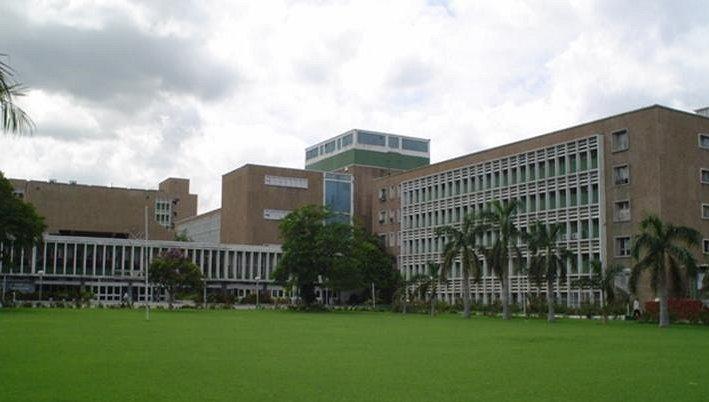Oppose Niti Ayog's Proposal for Corporate Takeover of Medical Education

Privatizing Medical Education, Image Courtesy: Wikipedia.org
In a move that is fraught with far reaching and extremely adverse consequences for medical education in India, the Niti Ayog has recently (on 7th August 2016) published a report titled "A Preliminary Report of the Committee on the Reform of the Indian Medical Council Act, 1956". The report is designed to reform the entire system of medical education in India. The operative part of the Niti Ayog report is a draft Bill that would replace the Indian Medical Council (IMC) Act of 1956. The Niti Ayog's report and the draft Bill have been circulated for public consultation, before its finalization.
Corrupting Influence of Privatised Medical Education
The report by Niti Ayog comes in the wake of the publication of the report of the Parliamentary Standing Committee on Health and Family Welfare (Report 92 submitted to the Rajya Sabha on 8th March 2016) and extremely adverse comments regarding corruption in medical education by the Supreme Court of India. The Parliamentary report too had been extremely critical of the functioning of the Medical Council of India (MCI) and had recommended a complete overhaul of the system of regulation of medical ethics and medical education (the twin functions of the MCI).
It is widely acknowledged that the mushrooming of private medical colleges in India has been the principal corrupting influence on medical education in India, and has been responsible for a steep deterioration in the standards of medical education. An investigative report by Reuters, conduced in 2015, found that more than one out of every six of India's medical colleges has been accused of cheating, according to government records and court filings. The Reuters probe also found that "recruiting companies routinely provide medical colleges with doctors to pose as full-time faculty members to pass government inspections. To demonstrate that teaching hospitals have enough patients to provide students with clinical experience, colleges round up healthy people to pretend they are sick".
Between 2010 and 2015 at least 69 Indian medical colleges and teaching hospitals have been accused of significant failings, including rigging entrance exams or accepting bribes to admit students. In this period about two dozen of the colleges were recommended for outright closure regulatory bodies. What is important to note here that almost all the complaints of violations of norms and of recommendations for closure of colleges pertain to those in the private sector. Let us examine the evolution of medical education in India, in respect to the ownership pattern of medical colleges.
Evolution of Medical Education Since 1980
In 1980 there were 112 medical colleges in India, of which 100 were government run and only 12 were run by private bodies. Over 90% of seats in medical colleges were in government run colleges. Most private colleges in that era were run by genuine charitable trusts and missionary institutions. Medical education was not conceived as a profit making avenue. How the situation has changed dramatically since then can by gauged by the fact that, currently, of the 426 medical colleges in India, more than half (221) are in the private sector. The number of undergraduate seats in medical colleges has risen to 53,330 (from 18,340 in 1980), but almost half of these seats (24,690) are in privately run medical colleges. Thus, between 1980 and 2016, the number of seats in government run colleges rose from 16,570 to 27,490 (a 66% increase), while the number of seats in private colleges rose from a mere 1,770 to 24,690 (a 14 fold increase!).

It is also interesting to look at the decadal growth patterns of private medical colleges in India. The following Table provides details.

Beyond the obvious that there has been a spurt in growth of private medical colleges since the 1980s, some interesting trends are clear if one examines the decadal growth rates of medical education. The growth of private colleges peaked between 2001 and 2010 and since then there has been a gradual stagnation and subsequent decline in growth of private colleges. Concurrently there is a discernible though modest increase in the number of new government medical colleges. The stagnation in the growth rate of private colleges is, in all likelihood, linked to what we noted earlier -- widespread concerns regarding non adherence to quality norms and regarding corrupt practices while admitting students, orders to close down several private colleges, consequent decline or stagnation in admission fees for private medical colleges, etc. Concurrently, in public health circles, especially in states, there appears to be some awareness that public investment in medical education is critical for the proper functioning of the public health system.
Niti Ayog's Prescription for Corporate Takeover
Let us now return to the Niti Ayog's prescriptions related to reform of medical education and of the Medical Council of India (MCI). One assumes that the Niti Ayog had two sets of facts available with it. The first pertains to evidence, contained in the 92nd Parliamentary Committee Report of the Ministry of Health and Family Welfare and in other sources, that the MCI has been become a den of corruption, which is fuelled by rampant corrupt practices linked to accreditation and regulation of private medical colleges. The second that the spurt in the growth of private medical colleges has not led to better public health outcomes, and the growth of private colleges is starting to falter.
The logical lesson that could and should have been drawn is that the policy of encouraging private medical colleges, both through diminishing investment in public funded medical education and through regulations designed to facilitate private colleges, needs to be reversed. Instead the Niti Ayog has made a startling recommendation that can only facilitate deeper penetration of a corrupt private sector driven system of medical education.
The Niti Ayog's report states:
"Currently, only ‘not-for- profit’ organizations are permitted to establish medical colleges. The Committee deliberated whether the draft bill or the regulations issued by the government should explicitly include a provision to permit ‘for- profit’ organizations to establish medical colleges. Given the shortage of providers and in recognition of the fact that the current ban on for-profit institutions has hardly prevented private institutions from extracting profits albeit through non-transparent and possibly illegal means, it was felt that any restriction on the class of education providers would be counter-productive. Therefore the Committee recommends delinking the condition for affiliation / recognition from the nature of the promoter of the medical college (viz. Trust, not for Profit Company)" (emphasis added).
This is neoliberal logic expressed in its most naked form. The report notes that private medical colleges have become profit making institutions, but the prescription is to legitimize profit making by allowing for-profit organizations to run medical colleges. There is not even an attempt to explore the possibility of shoring up public spending on medical education. The drumbeaters of neoliberal economic policy will never tire of pointing out how the Indian economy has been growing at over 5% every year. Yet they will not bat an eyelid when confronted, for example, with data that in this same period of neoliberal reforms public investment in medical education has actually declined or stagnated. As per the logic of neoliberalism all fields of human activity need to be harnessed as avenues for profit making, so also the field of medical education. The Niti Ayog's report is thus an open invitation to corporate hospital chains and other entrepreneurs to invest and reap profits by openly selling medical education in the market. The only rationale offered is that as long as avenues of profit making are 'transparent' there is no harm in opening up medical education for profit-making. So the report says: "Medical institutions may be required to transparently advertise the tuition and any other fees upfront on their websites with no other fees permitted".
One is not clear about the public health credentials of the three member committee, but the approach suggested in the report appears blind to the need to align medical education with public health goals. The report continuously harps on the need to train more doctors, but there is a complete lack of acknowledgment that a mere increase in medical colleges (of whatever kind) will not automatically lead to availability of physicians to advance public health goals. Currently over 80% of posts for specialists in the public health system remain vacant, not because specialists are not being trained. They remain vacant because our ill resourced public system is incapable of absorbing them. Some of our best intuitions train doctors who subsequently migrate to distant shores. India is the world’s largest exporter of doctors, with about 47,000 currently practicing in the United States and about 25,000 in the United Kingdom. It is foolhardy to expect that medical graduates who would potentially pay lakhs or crores of rupees to be trained in corporate run private colleges will then serve in the public health system. The Niti Ayog's plan to promote corporate run medical colleges is linked to the current government's vision of healthcare, that sees the growth of hospital chains such as Apollo. Max, Fortis, etc. as markers of progress in an India which has scant regard for the needs of a majority of the country's population.
Oppose the Draft Bill in Parliament
The Niti Ayog's report also provides a blueprint for reform of the Medical Council of India. It is impossible to hold a brief for the current MCI, given its record as arguably one of the most corrupt regulatory institutions in the country. The MCI, over the years, has become a den of corruption because political patronage provided by some political parties led to the capture of the MCI by corrupt private practitioners. Instead of attracting professionals of high calibre, the MCI came to be run by a coterie that was secure in the belief that they would be protected by politicians and bureaucrats at the highest levels. Reform of the MCI could have meant true democratization of the apex body for regulation of medical ethics and education, by making space for professionals, academics and social activists. Instead the prescription offered is to convert the MCI into an appendage of the government, packed with ex-officio members nominate by the government. The current government's fondness for centralization of power and discomfort with plural and democratic organizations is well known. An MCI that is run as an appendage of a government wedded to the advancement of neoliberal reforms is an ideal foil to further reforms in medical education that are designed to service the needs of the corporate sector. Parliament needs to decisively reject the draft Bill that is being proposed as a replacement to the Indian Medical Council Act of 1956.
Disclaimer: The views expressed here are the author's personal views, and do not necessarily represent the views of Newsclick
Get the latest reports & analysis with people's perspective on Protests, movements & deep analytical videos, discussions of the current affairs in your Telegram app. Subscribe to NewsClick's Telegram channel & get Real-Time updates on stories, as they get published on our website.
























